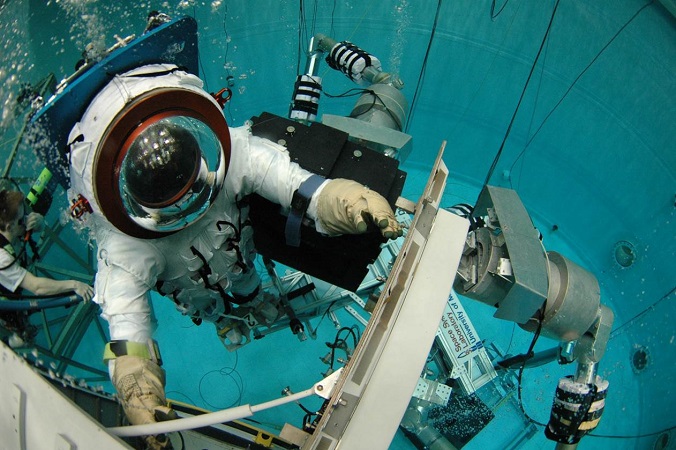About Us
 The Space Systems Laboratory (SSL) is part of the Aerospace Engineering Department and A. James Clark School of Engineering at the University of Maryland in College Park, Maryland. A leader in the area of astronautics, the Space Systems Laboratory is centered around the Neutral Buoyancy Research Facility, a 50-foot diameter, 25-foot deep water tank that is used to simulate the microgravity environment of space. The only such facility in the world housed at a university, Maryland's neutral buoyancy tank is used for undergraduate and graduate research at the Space Systems Lab. Research in Space Systems emphasizes space robotics, human factors, applications of artificial intelligence and the underlying fundamentals of space simulation. There are currently many systems being tested, including Ranger, a four-armed satellite repair robot, and EUCLID, a 6 degree of freedom free-flying underwater camera platform.
The Space Systems Laboratory (SSL) is part of the Aerospace Engineering Department and A. James Clark School of Engineering at the University of Maryland in College Park, Maryland. A leader in the area of astronautics, the Space Systems Laboratory is centered around the Neutral Buoyancy Research Facility, a 50-foot diameter, 25-foot deep water tank that is used to simulate the microgravity environment of space. The only such facility in the world housed at a university, Maryland's neutral buoyancy tank is used for undergraduate and graduate research at the Space Systems Lab. Research in Space Systems emphasizes space robotics, human factors, applications of artificial intelligence and the underlying fundamentals of space simulation. There are currently many systems being tested, including Ranger, a four-armed satellite repair robot, and EUCLID, a 6 degree of freedom free-flying underwater camera platform.
The Space Systems Lab was founded at MIT in 1976, by faculty members Rene Miller and J.W. Mar. Its early studies in space construction techniques led to the EASE (Experimental Assembly of Structures in EVA) flight experiment which flew on Space Shuttle mission STS-61-B in 1985. In 1990, lab director Dr. David Akin moved the lab to the University of Maryland. The Neutral Buoyancy Research Facility, or NBRF, was completed in 1992. Current projects include the MX suits, simplified spacesuits for use in EVA research; Exo-SPHERES, a prototype satellite for inspection missions, and DYMAFLEX, a light-weight high performance manipulator developed for controls testing in a highly coupled dynamic environment.

